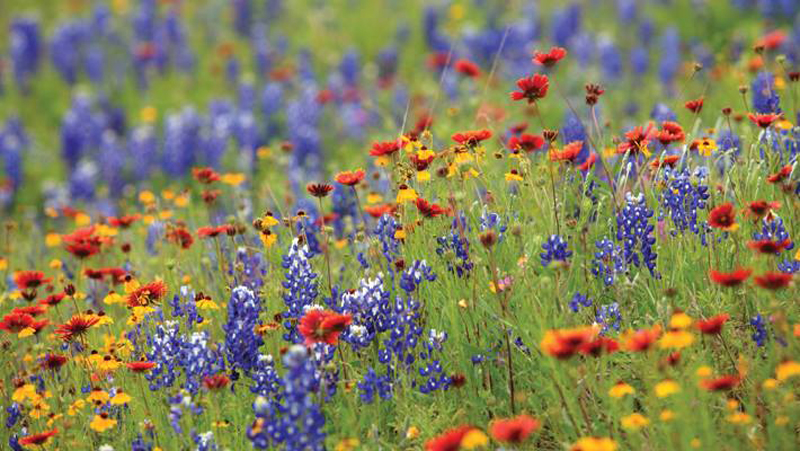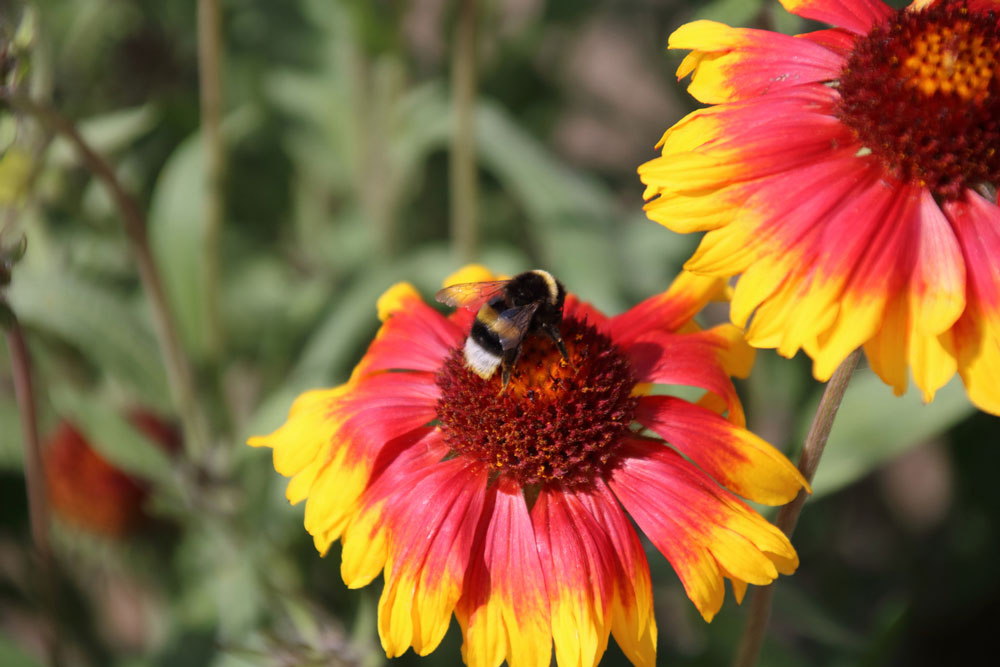
A field of bastard cabbage in Marble Falls with a closeup of the plant’s yellow bloom. Staff photos by Jennifer Greenwell
The war is on against a beautiful, bushy, yellow wildflower with an offensive name. State and federal agencies are in a battle to eliminate an edible plant known as bastard cabbage that is crowding out native species such as bluebonnets, Indian paintbrushes, firewheels, and more. And they need your help.
Rapistrum rugosum is a sweet-looking plant in the mustard family (see recipe) that is native to Eurasia and parts of Africa. Experts believe it made its way to America through shipments of contaminated grass seeds and mulch.
At first glance, it is a dazzling complement to the native wildflowers that grace Central Texas fields and roadways each spring. If it weren’t for the noxious nature of this nastily named plant, it might be a welcome sight.
Unlike native wildflowers, this pretty weed doesn’t play well with others. Also known as turnip weed or giant mustard, the dastardly cabbage throws shade on native wildflowers and grasses—literally. Leafy rosettes spread over the ground like a canopy, preventing sunlight from reaching anything underneath. The wiry branches can shoot up to 5 feet high with a cluster of tiny yellow flowers on each tip that soak up nutrients from the soil, preventing other plants from growing. Give it an inch and it will take a mile.
In some areas, the plants have already taken over, creating a monoculture. Breeding rabbits have nothing on this invasive species.
Bastard cabbage is an annual and lives for one year, growing anew from the seeds it produces in abundance. Each single, self-sowing plant drops hundreds of minuscule seeds, which quickly germinate in late fall to early winter, getting a head start on natives.
Fight back against a full takeover by continually mowing it short to prevent it from fruiting. Once mowed, sow native wildflower seeds in its place.
The plant is resistant to herbicides, so the best way to control its spread is to manually remove it. Put your garden gloves on, tug it out of the ground—roots and all—and either throw it away in the trash (don’t toss it on a compost pile!) or eat it.
Yes, the entirety of this plant is edible and healthy. It contains beneficial vitamin C, minerals, and antioxidants. Of course, you would have to be mighty hungry—or feeding an army—to make a dent in the invasive population through culinary arts alone.
Learn more about the state’s invasive species at TexasInvasives.org.
Bastard cabbage recipe
(Prepared like greens)
- Gather about 1 pound of bastard cabbage plants (leaves, flowers, stems, roots). Rinse. Chop into small pieces.
- Add to boiling water for about 2 minutes.
- Rinse with cold water.
- Add garlic, olive oil, and lemon to taste. Garnish with grated asiago or parmesan cheese.











